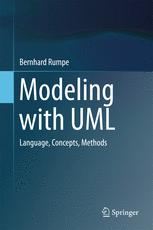

Most ebook files are in PDF format, so you can easily read them using various software such as Foxit Reader or directly on the Google Chrome browser.
Some ebook files are released by publishers in other formats such as .awz, .mobi, .epub, .fb2, etc. You may need to install specific software to read these formats on mobile/PC, such as Calibre.
Please read the tutorial at this link: https://ebookbell.com/faq
We offer FREE conversion to the popular formats you request; however, this may take some time. Therefore, right after payment, please email us, and we will try to provide the service as quickly as possible.
For some exceptional file formats or broken links (if any), please refrain from opening any disputes. Instead, email us first, and we will try to assist within a maximum of 6 hours.
EbookBell Team

4.8
84 reviewsThis book presents a variant of UML that is especially suitable for agile development of high-quality software. It adjusts the language UML profile, called UML/P, for optimal assistance for the design, implementation, and agile evolution to facilitate its use especially in agile, yet model based development methods for data intensive or control driven systems.
After a general introduction to UML and the choices made in the development of UML/P in Chapter 1, Chapter 2 includes a definition of the language elements of class diagrams and their forms of use as views and representations. Next, Chapter 3 introduces the design and semantic facets of the Object Constraint Language (OCL), which is conceptually improved and syntactically adjusted to Java for better comfort. Subsequently, Chapter 4 introduces object diagrams as an independent, exemplary notation in UML/P, and Chapter 5 offers a detailed introduction to UML/P Statecharts. Lastly, Chapter 6 presents a simplified form of sequence diagrams for exemplary descriptions of object interactions. For completeness, appendixes A–C describe the full syntax of UML/P, and appendix D explains a sample application from the E-commerce domain, which is used in all chapters.
This book is ideal for introductory courses for students and practitioners alike.